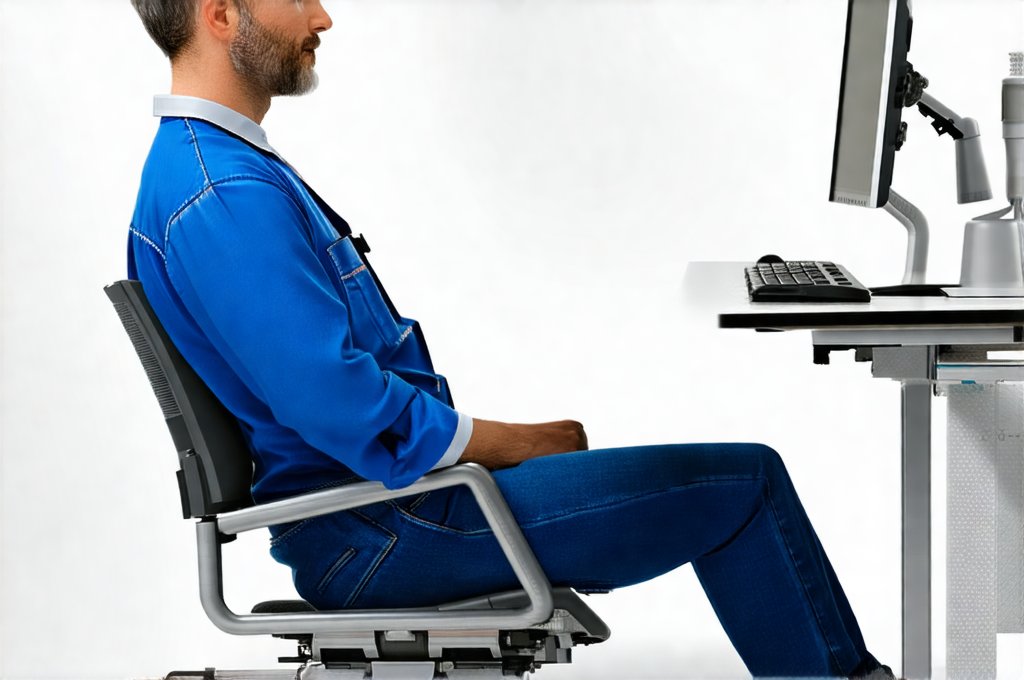The modern workplace, increasingly defined by sedentary roles and prolonged computer use, presents unique challenges to physiological well-being. Among these, bladder function often suffers as a consequence of limited movement, postural constraints, and psychological stressors inherent in desk work. Many individuals experience subtle but significant changes in their bladder habits – increased frequency, urgency, or even accidental leakage – without necessarily recognizing the connection to their professional lifestyle. This is particularly concerning given that proactive strategies can significantly mitigate these issues, improving quality of life and workplace productivity.
Understanding the intricate relationship between postural alignment, pelvic floor muscle function, hydration levels, and psychological state is crucial for developing effective interventions. It’s not simply about “holding it in” longer; rather, it’s about cultivating a holistic approach to bladder health that integrates mindful movement, optimized ergonomics, and consistent self-care practices throughout the workday. This article will delve into core engagement techniques specifically tailored to support bladder function in desk workers, providing practical strategies for preventing and managing common urinary concerns.
Understanding the Desk Worker’s Bladder
The typical desk job environment often creates a perfect storm for bladder dysfunction. Prolonged sitting restricts blood flow to the pelvic region, potentially weakening supporting muscles – including those of the pelvic floor. This can lead to decreased bladder control and increased urgency. Furthermore, postural habits like slouching compress the abdominal cavity, putting additional pressure on the bladder. The constant mental strain associated with work tasks can also contribute to stress incontinence, as anxiety tends to tighten pelvic floor muscles, paradoxically exacerbating symptoms. It’s a complex interplay of physical and psychological factors.
A key component often overlooked is diaphragmatic breathing. Shallow chest breathing, common when stressed or focused, reduces abdominal support for the bladder. Conversely, deep, belly-based breaths engage core muscles – including the pelvic floor – providing natural stabilization. Hydration also plays a vital role; while adequate fluid intake is essential, irregular sipping throughout the day is preferable to large volumes at once, which can overwhelm the bladder. Finally, the simple act of avoiding regular movement contributes to stiffening and decreased function in muscles crucial for maintaining continence.
Core Engagement Techniques: A Practical Approach
Core engagement isn’t just about achieving sculpted abs; it’s about activating a network of muscles that provide structural support and stability throughout the body, including the pelvic region. For desk workers, this translates to incorporating subtle but consistent exercises into their daily routine. These aren’t strenuous workouts but rather mindful movements designed to counteract the effects of prolonged sitting. A good starting point is pelvic tilts, performed while seated – gently rocking forward and backward to engage abdominal muscles without holding the breath.
Another effective technique involves transverse abdominis activation. Imagine drawing your navel towards your spine, creating a gentle tightening sensation in your lower abdomen. Hold for a few seconds, then release. Repeat several times throughout the day. These exercises strengthen the core muscles that support the bladder and urethra. Importantly, these should be done without clenching the glutes or holding your breath – maintaining relaxed breathing is crucial. Combining these exercises with mindful posture correction – ensuring an upright spine and relaxed shoulders – further enhances their effectiveness.
Pelvic Floor Muscle Training (PFMT) Basics
Pelvic floor muscle training, often referred to as Kegel exercises, remains a cornerstone of bladder health. However, it’s essential to perform them correctly. Many people mistakenly engage glutes or abdominal muscles during Kegels, negating the intended effect. The goal is to isolate the pelvic floor muscles – the same muscles you use to stop the flow of urine midstream (though avoid practicing this as a regular exercise method).
- Identify the Muscles: First, identify the correct muscles through practice. Imagine stopping the flow of urine or preventing yourself from passing gas.
- Proper Technique: Squeeze and lift these muscles for 3-5 seconds, then relax for an equal amount of time. Repeat 10-15 times, several times a day. Focus on slow, controlled movements rather than quick contractions.
- Consistency is Key: Regular practice – ideally integrated into your daily routine – is crucial for strengthening the pelvic floor muscles and improving bladder control.
It’s important to note that PFMT isn’t always appropriate for everyone; individuals with certain medical conditions should consult a healthcare professional before starting a program. You can learn more about bladder training techniques that work for women.
Integrating Movement Breaks into Your Workday
The detrimental effects of prolonged sitting can be significantly mitigated by incorporating regular movement breaks throughout the day. Setting reminders – every 30-60 minutes – to stand up, stretch, and walk around is highly beneficial. These breaks don’t need to be long or elaborate; even a simple stroll to refill your water bottle or do a few stretches at your desk can make a difference. Consider also incorporating pelvic-safe stretch sequences for office workers!
Consider incorporating micro-movements into your workflow. For example:
– Seated Marches: Lift your knees one at a time, as if marching in place while seated.
– Shoulder Rolls: Gently roll your shoulders forward and backward to relieve tension.
– Ankle Pumps: Rotate your ankles clockwise and counterclockwise.
These small movements increase blood flow, reduce muscle stiffness, and promote overall well-being. They also provide a mental break from the demands of work, reducing stress levels and improving focus. Addressing these issues proactively can help you avoid bladder infections in perimenopausal women.
Mindful Hydration Strategies
Hydration is fundamental to bladder health, but how you hydrate matters just as much as how much you drink. Avoid consuming large quantities of fluids all at once, which can overwhelm the bladder and increase urgency. Instead, sip water consistently throughout the day – aiming for a steady intake rather than sporadic gulps.
Be mindful of beverages that can irritate the bladder, such as caffeine, alcohol, and carbonated drinks. These substances have diuretic effects, increasing urine production and potentially exacerbating symptoms. Herbal teas, while often perceived as healthy, can also contain ingredients that affect bladder function. Finally, pay attention to your body’s signals – drink when you feel thirsty, but avoid forcing yourself to consume excessive amounts of fluids if you’re not feeling particularly dehydrated. A balanced approach to hydration is key for maintaining optimal bladder control and comfort. Understanding the role of estrogen in bladder function can also be beneficial, especially for women. Remember that impact of limited fluid intake on bladder function is important to consider, even for adults. Additionally, it’s vital to focus on targeted core engagement practices to relieve prostate pressure during desk work and reduce the need for screen-time reduction techniques.





















